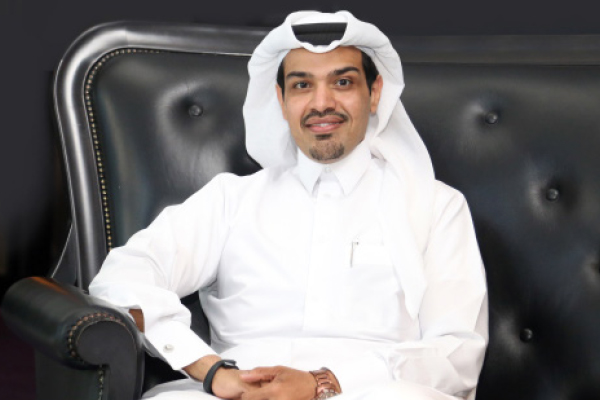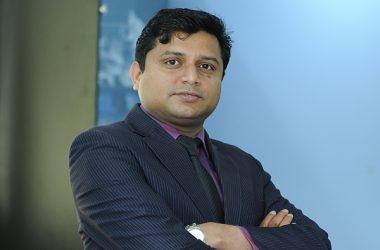Despite boasting the world’s largest fleet of liquefied natural gas (LNG) vessels, Qatari firm Nakilat’s IT systems were wasteful and inefficient. Joining the company in 2014, IT manager Hamad Suwaid was tasked with modernising the hardware, software and applications that resided in its data centre.
When laid side by side, Nakilat’s liquefied natural gas (LNG) vessels have a combined carrying capacity of over 8.5 million cubic metres – an astonishing 15 percent of the world’s LNG capacity.
Nakilat’s (Qatar Gas Transport Company) core business is shipping Qatari gas to countries around the world. Its $11 billion fleet of 67 wholly and jointly-owned LNG and four liquefied petroleum gas (LPG) vessels comprises one of the world’s newest and largest gas fleets. Through various strategic joint-ventures and subsidiaries, the company also offers a range of maritime services such as ship repair, ship building and offshore fabrication as well as towage, agency and warehousing solutions for vessels in Qatari waters.
The company forms a key part of the supply chains of some of the Qatar’s most important energy projects, including those undertaken by Qatar Petroleum, Qatargas and RasGas. LNG has a high energy density, and is largely used for heat and power generation.
Despite the vast scope of Nakilat’s work, its use of IT was wasteful. Nakilat’s IT systems were siloed across the company’s divisions – ship-building, transportation and repairs – while servers were dispersed across the business, making their management and maintenance costly and time-consuming.
Joining the company in January 2014, IT manager Hamad Suwaid was tasked with building a roadmap with technologies that could maximise Nakilat’s opportunities, and lift them out of the “mess” that the IT was in. “In the seven years prior to my joining the company, there had been a huge investment in terms of both CAPEX and OPEX on the company’s IT, but the output was not up to scratch,” Suwaid says. “The reason behind this was simple – every division had its own IT infrastructure. We had three different data centres in Qatar, and each ship had its own separate data centre, as well as different providers and applications. This meant our IT was a long way from being classed as ‘innovative.’ I had to look at digitalising Nakilat, finding a way for the business to be run from tablets and smartphones.”
Other concerns within Nakilat’s IT infrastructure also had to be addressed. A range of disparate hardware appliances with multiple vendors had been deployed, which inevitably meant a series of complicated SLAs. From a security perspective, the appliances that were already in place were struggling to meet requirements of the ictQATAR Critical Information Infrastructure Protection laws. It faced a range of other difficulties, including a relatively limited communications network and a varying back office systems that needed upgrading.
Perhaps of greater concern was the lack of any virtualisation, firewall or automated data backup process.
Suwaid set about transforming Nakilat’s IT operations and data centre. Topping his list of priorities was delivering a series of cost-effective and game-changing upgrades for the company, and delivering an IT environment that could bring real-time data to the business.
Having issued an RFP, and evaluated a number of vendors who could assist with the migration, Suwaid decided that Fujitsu’s Integrated System PRIMEFLEX was the best platform available for managing the change to roll out SAP HANA. He decided that consolidating the Qatari data centres into a virtualised “all-in-one” site was necessary, which would feature auto backup and archiving. In terms of applications, Suwaid introduced a ship management app that could increase productivity and reliability, and provide self-service for Nakilat’s fleet management team.
On the communications front, meanwhile, Suwaid introduced a consolidated contract for 18 ships, as well as providing free VOIP calling between offices and ships.
Collectively, the changes have been transformative for Nakilat, and Suwaid has seen the company’s annual IT investment halved due to both CAPEX and OPEX savings. “The upgrades in hardware have increased the replacement period from three to five years,” he says. “The all-in-one data centre will reduce manpower costs in terms of maintaining multiple sites, as well as high physical maintenance costs.”
The upgrade in applications, meanwhile, has increased staff productivity by providing reliability and speed in terms of data delivery. This in turn is enhancing Nakilat’s senior management’s decision-making abilities. “Critical business reports which previously took hours to generate are now available in seconds, making the company more responsive and productive,” Suwaid says. Nakilat and its joint ventures now have highly available access to the information that the organisations need via a secure private cloud.
“One of our biggest benefits has been our ability to revisit business processes,” Suwaid says. “Many of them were based outside of IT. Once you can give employees access to enterprise applications on their mobile devices, it means they do not have to be in the office in order to work. Social media feeds and analytics are providing dashboards that empower our senior management to make more informed decisions. Now that our back end is consolidating data into the cloud, everything is becoming possible. For example, if the Suez Canal is congested with ships, real-time data can allow our vessels to change their route.”
Suwaid also believes the transformation has proven to be worthwhile as it has influenced the most important decision-makers within Nakilat. “The leadership of the company are buying into the idea of using technology to benefit the business,” he says. “They are beginning to realise that anything – to a certain extent – can be accomplished with technology.”
The changes have set a precedent for more development in terms of fresh IT initiatives. “From 2014 to now, there are still a range of ongoing projects which will have a positive impact on the company,” Suwaid says. “I am still extremely driven to turn IT from a cost centre into a profit centre. The market in the Middle East and North Africa region is still behind due to legacy data centres and applications. When data centres can be more available, and make use of the cloud, you can bring the data centre into the next generation.”
Beyond the realm of Nakilat, Suwaid believes that initiatives such as the ones he has undertaken are important if Qatar is to make the most of its economic opportunities. “IT is relieving our country’s infrastructure costs,” he says. “Labour costs are not cheap. The infrastructure built around various sectors is getting harder to justify. The reduction in the oil price presents a good chance for IT to transform. Technology that can reduce infrastructure and man power costs is a very positive contribution to a country.”





